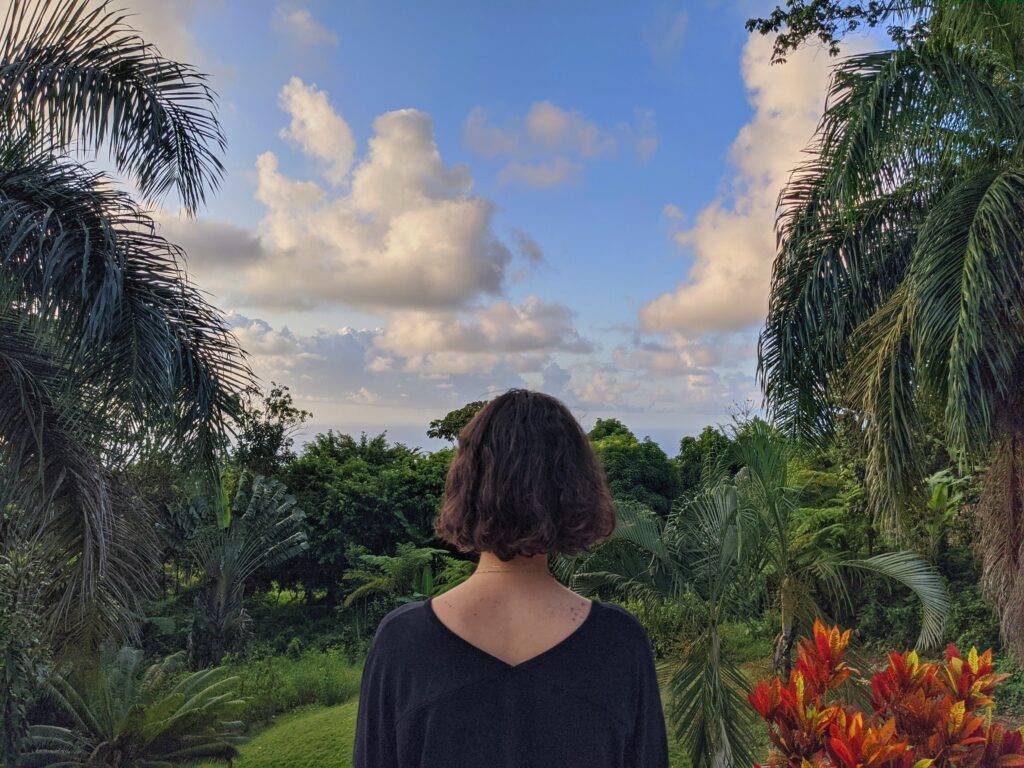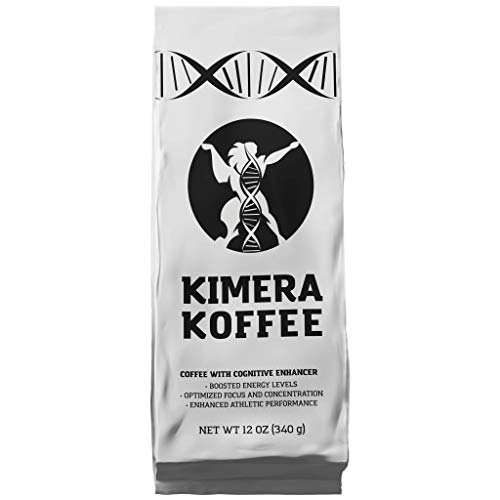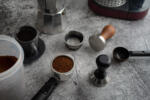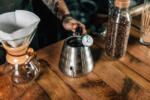What do you know about the Dominican Republic coffee? Have you ever tasted it? Whether you have sipped it or not, we are sure there are some things you don’t know about this coffee. In this piece, you will learn everything about the Dominican Republic coffee.
Globally, the Dominican Republic coffee has its place, just like coffee from other major growing countries. And as a result, the Dominican Republic is a well-known coffee producer. Here are more stats about this beautiful country:

| Place in the world as coffee exporter (13/14): | 31st |
| Sacks (60kg) exported annually (13/14): | Approx. 55,000 |
| Percentage of world coffee market: | Less than 1% |
| Other major agricultural exports: | Banana, cocoa, molasses, sugar cane, cotton |
| Typical Varieties Produced: | Typica, Caturra, Catuaí, Bourbon & Mundo Novo |
| Key Coffee Regions: | Cibao, Bani, Azua, Ocoa, Barahona & Juncalito |
| Typical Harvest Times: | September – May |
| Typically Available: | From late December |
A brief history of the Dominican Republic

The Dominican Republic is located in the Caribbean on the island of Hispaniola. It shares its border with Haiti, has an estimated population of about 10,300,000 people, and has prided itself on cultivating coffee for the last 300 years.
The coffee here was introduced in 1715 by Spanish colonists. Soon it became a popular crop for many farmers and ultimately became a national obsession. However, it was not until 1872 that the Dominican Republic largely started to export coffee.
This nation’s tropical and mountainous landscape makes it the ideal environment to cultivate coffee beans. Most beans are grown between 2,000 and 5,000 feet because the higher the elevation, the harsher the growing conditions are. Because of these extreme growing conditions, coffee takes longer to grow and has more time to develop more complex and flavorful sugars.
Coffee production reputation
Currently, the coffee produced in the Dominican Republic is considered among the best coffee in the world. Although robusta and arabica coffee are grown here, arabica is produced more.
The coffee here is grown in different regions, including Juncalito, Cibao, Baní, Barahona, Ocoa, and Azua. More about these growing regions shortly.
Coffee is harvested from September to May. A huge percentage is consumed locally, and about 350,000-500,000 bags are exported annually. All coffee cultivated here undergoes the wet process purposively to yield high-quality coffee. Once the beans have been collected, they are pulped by a machine, and the cherries are fermented in water for about 1-2 days.
Characteristics of Dominican Republic coffee
Coffee grown in high areas has a higher acidity than coffee grown in lower areas, which tends to be softer.
Compared to Jamaican coffee, Puerto Rican coffee, and Caribbean coffee, the Dominican Republic coffee is, in fact, the least notable of the three. However, a good high-grown Dominican coffee with proper processing is well-balanced and exhibits classic Caribbean coffee tasting characteristics.
Coffee growing regions

Cibao Valley
Located in the northern part of the country, this valley is high in elevation, making it suitable for growing coffee. Coffee grown here is full-bodied with hints of earthiness and nuttiness. Additionally, it is low in acidity.
Juncalito
Located in the middle of three continents, in a mountainous landscape, and in a pleasant climate, this region is famous for growing coffee with hints of fruitiness from tropical fruits found in the area.
Bani
Bani is located in the southern region of the country. It receives significant rainfall that keeps the soil enriched, fertile, and moist. It is the primary area of commercial manufacturing and exporting coffee and bananas.
Azua
Like Bani, Azua is also located in the southern part of the country and is the primary area for growing tobacco, sugar, and coffee. In addition, the fertile mountainous regions surrounding Azua make it an ideal place for healthy and savory coffee beans.
Barahona
Located in the southwestern part of the country, Barahona is known for its high-quality coffee. Temperatures here remain steady throughout the year, producing noteworthy coffee for its rich flavor and acidity.
San Jose De Ocoa
It is also located in the southern part of the country. Coffee grown here is known to be very robust in flavor. In addition, the average temperature in the months of cultivation makes this area ideal for growing coffee.
Growing and harvesting season
The Dominican Republic has no distinct rainy season. Instead, it gets rain all around. This, plus the warm and gentle trade winds and ocean currents, extend the growing season allowing the coffee fruit to ripen slowly, producing a high-quality coffee bean.
And because there are different growing regions in this country, coffee plants flower at different times. So the country can yield high-quality coffee throughout the year. The premium coffee beans are grown at 3,500 feet above sea level and higher on the terraced mountain slopes.
Often coffee is harvested from October through June, with farmers often going back to the farms to pick the ripest coffee cherries. As a result, the best Dominican Republic coffees are hand-picked on farms and then sun-dried in bulk on large patios.
Most of the Dominican Republic’s coffee is organically and shade-grown on less than eight acres of coffee farms.
How to make Dominican coffee

You need:
- Espresso machine, especially a “long espresso” brewer (you can use other brewing methods if you wish, but the results may not be that appealing)
- Hot water (92º-96º C)
- Fresh roasted and fresh ground coffee
Hot water will be forced up the inner tube by pressurized steam. When the water hits the ground coffee, the temperature is perfect. We urge you not to brew more coffee than you need. This is because any coffee left warming or cooling loses body and flavor very fast. So, if possible, prepare the amount you need!
Recommended brands
With various blends and brands coming from this country, sometimes you may find yourself unable to decide which coffee to pick. We have made it easier for you by listing some of the reputable, flavorful, and consistent brands.
Santo Domingo Coffee
Cafe Santo Domingo source its coffee from the areas of Barahona and Cibao as well as Noroeste, Sierra Sur, and Neyba. It produces blends that are well-balanced, full-bodied, and full of flavor. Additionally, most of their coffees have notes of nuttiness and hints of berries and chocolate.
Kimera Koffee Original Roasted Coffee
You won’t go wrong with this blend if looking for a product with extra essential vitamins. These vitamins, plus the already present caffeine, give you the much-needed kick to jump-start your day. In addition, the company only uses organic beans, which are roasted to boost brain function, energy, and athletic ability.
Kimera Koffee Phase 1 Peaberry: Dominican Republic Coffee
Having hints of chocolate and a silky-smooth finish, this coffee by Phase 1 is grown in the higher altitudes in the Jarabacoa region. Moreover, Phase 1 is explicitly peaberry coffee beans. That makes it one of the rarest Dominican Republic blends you will be able to find.
Volcanica Coffee Company Dominican Coffee
Volcanica’s Dominican blend uses 100% arabica beans sourced from the Jarabacoa region of the country. It is a medium blend that is well-balanced in flavor, easy on the acidity, and well-balanced in the caffeine content. With all Volcanica’s beans harvested from crops planted at 3,000 feet or higher, you will receive the most robust and savory coffee beans.
Fresh Roasted Coffee: Dominican Republic K-Cups
Are you a fan of Keurig? Then you will love these boldly flavored K-cups. The company makes sure the beans are packed immediately after roasting, so you sip the freshest cup over. Additionally, this company has a carbon footprint of 80% and roasts coffee with the most environmentally-friendly technology available.
Traditional Dominican Coffee
Most people in the Dominican are already ardent coffee lovers, and because of this, they have their way of enjoying coffee. Many of them never enjoy their coffee completely black. Instead, they enjoy it when it is sweeter in flavor. They blend coffee and sugar to give it a sweet flavor. Keep in mind that this beautiful country harvests a lot of sugar.
Because of this, Dominicans will sip coffee in the morning, afternoon, and evening. But, predominately, locals enjoy this special sweet treat irrespective of what time it is.
Conclusion
With the Dominican Republic coffee growing in different elevations, the blends and brews to choose from are endless. We urge you to pick a brew at a time, try it out, and enjoy. All the best!
Disclaimer: This post contains affiliate links, which means I may receive a small commission, at no extra cost to you, if you make a purchase using these links. Remember to support us by purchasing through the Amazon/Walmart/Impact Radius links provided. Last update on 2024-05-01 / Affiliate links / Images from Amazon Product Advertising API
Disclosure: No compensation or free products were received in exchange for writing this review.

Editorial Staff
The editorial staff at Crazy Coffee Crave is a team of coffee enthusiasts & Baristas who enjoy the one thing we all think about as soon as we get up in the morning. Trusted by thousands of readers worldwide.









